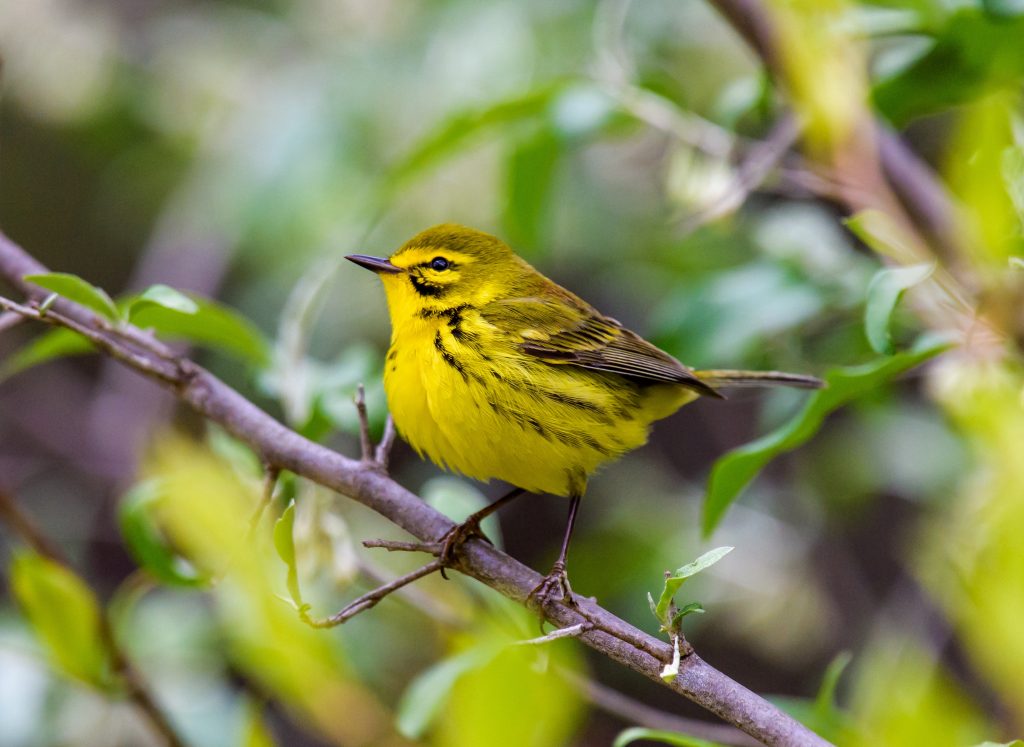
Photo: Meg Coss.
In late summer, the dark purple drupe of the black cherry tree reaches maturity and the resident birds – the robins and sparrows, the finches and crows – have a feast. Fully ripened, nearly black in color, the fruit is gobbled and shat out. The backyard pathway is a mess of purple splotches that September rains wash away. As the temperature cools and the aubergine droppings are a thing of the past, the eye returns to the tree, to the oblong leaves with serrated edges turning from lustrous green to gold-medal yellow. Come October, the leaves will dislodge and spiral down to the patchwork pile of yellow hickory leaves, orange maple leaves, and the deep red leaves of the flowering dogwood. The ground and the canopy will be brilliant with color, the wind will make branches bow and leaves flutter in the waning sunlight, casting lively shadows around. It’s time for the season of the dancing light; it’s time for fall.
Rhode Island forests cover 56% of state land and contain a range of tree species – oak, hickory, maple, pine, birch, ash, to name a few. The oak-hickory forest type is the most common in the state and is dominated by northern red, white, scarlet, and black oaks, as well as red maples.
In the fall, as chlorophyll production slows to a stop, yellow, orange, and red pigments emerge in tree leaves. The pigments are known as xanthophylls, carotenoids, and anthocyanins respectively.
Cooler fall nights that stay above freezing promote anthocyanin production, which creates those vibrant red leaves. Leaves rich in the carotenoid beta-carotene produce that urgent orange color as beta-carotene absorbs blue and green light waves and reflects back yellow and red.
The relatively contiguous forests of western Rhode Island provide a habitat corridor for migrating birds en route to their wintering grounds in Central and South America. Instead of flying due south over the open ocean, birds that breed across the boreal forests of Canada follow a southwesterly path through southern New England.

Prairie Warbler. Photo: Ed Hughes.
“Rhode Island is a hub of migratory activity, western Rhode Island in particular,” says Dr. Charles Clarkson, director of Avian Research at the Audubon Society of Rhode Island. “The forests of western Rhode Island tend to swell with migrant birds during the fall migratory period, which runs mid to late August all the way through the first or second week of November. If you want to see species like the Blackburnian warbler or the bay-breasted warbler or the Cape May warblers, now is the time.”
In the fall, migratory birds rest and refuel in forests and parks and protected spaces. The Audubon Society of Rhode Island has 14 publicly accessible refuges and manages over 100 parcels of protected land. Migratory birds also like to rest in Rhode Island’s cemeteries, such as Swan Point Cemetery, which has historically been used by migrant birds and is representative of a habitat island – a small, forested area surrounded by developed locations.

“Long-standing, protected parcels of land, such as cemeteries, are incredibly and increasingly important for migrants. They’re not only providing for the birds and other wildlife that might breed or over-winter here, but also for the birds and other wildlife that use these locations during transitory periods like migration.”
For a state that covers an area of 1,214 square miles, RI’s diverse habitats – forested environments, swaths of suburban areas, an expanse of coastal terrain, a rocky southern coastline, around 60,000 acres of farmland, and so on – allow for a larger diversity of bird species.

Bay-Breasted Warbler. Photo: Audubon Society of Rhode Island.
“I’m generally excited about the entire period of fall migration,” says Clarkson. “I like to go out and watch birds as they move through the area and see these mixed foraging flocks, which might consist of 15 to 20 individual birds across seven or eight different species. I like to watch them and see how they find their resources. That to me is very exciting, just watching bird flocks do their thing and appreciate them for what they are.”
This year, the sun will pass through Earth’s celestial equator on Saturday, September 23 marking the autumnal equinox – the start of fall. Eventually we will settle into the dreaming days of winter. But until then, let us look to the beauty of our trees and note the birds passing by.
Visit birdcast.org to view real-time bird migration forecasts in your area. Visit asri.org to learn about upcoming Audubon Society events and ways to volunteer.